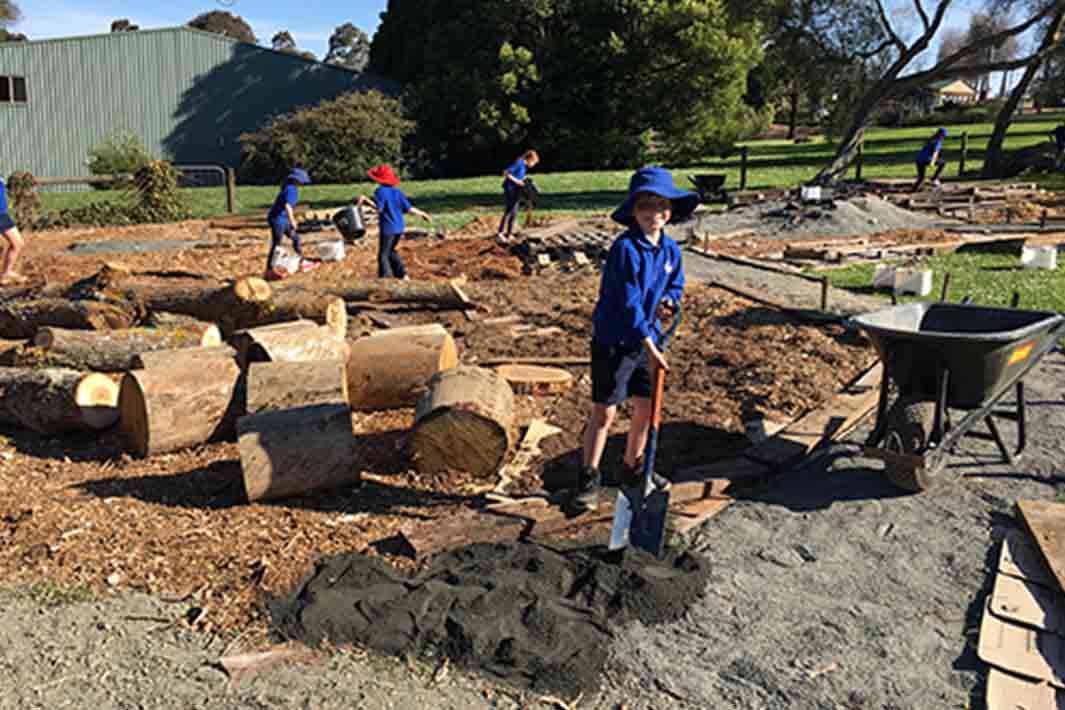
Neerim South Primary School students help shovel to create a path for a native garden.
Age Group: 0-7, 7-14
Grant Name: 2020 Victorian Junior Landcare and Biodiversity Grants
School: Neerim South Primary School
Grant Sponsor: Department of Environment, Land, Water and Planning
Project Overview:
Neerim South Primary School, located in southern foothills of Victoria’s Great Dividing Range, wanted to improve habitat on the school grounds for native animals by creating a safe, suitable environment for them to live and breed.
A 2020 Victorian Junior Landcare and Biodiversity Grant supported them to implement this project.
The students worked collaboratively with each other, the school and wider community to achieve an eco-friendly garden that is now enjoyed by students, staff, community members and most importantly, native animals. Participating in this project has provided the children with a sense of ownership, reinforced the school values and given them the reward of having a beautiful area to play and learn for years to come.
Educational Outcomes:
Throughout the project, students learned about the ecosystem and biology of living things with links to the curriculum. They now have an understanding about the importance of biodiversity, and in doing so, are becoming good stewards of the natural world. Importantly, this educational experience provided students with the opportunity to participate creatively and to see themselves as having the capacity to act in ways that will help to establish more sustainable ways of living.
The Aboriginal Story Stump created was designed to incorporate past, present and future cultures and teach the children to compare their own knowledge and experiences with those of others.
The students have enjoyed being ‘in’ the garden, exploring around rocks, sculptures, trees, etc. and observed insects. The children also like balancing along the rock and log edging and sitting on the big boulders. As the garden establishes further other fauna will gradually inhabit the garden, much to the children’s delight.
Environmental Outcomes:
The work done is improving habitat within the school and along the track to the wetlands and within the wetlands.
The garden provides them with a place to physically play which increases their balance and coordination whilst discovering insects, worms, etc.
The soil ecosystem health is improved with no use of chemicals. The flowering native plants are providing habitat and food source for insects, frogs, lizards, possums. Plus, rocks, stumps and plants offer shelter for the fauna.
Conclusion:
The students have enjoyed being ‘in’ the garden, exploring around rocks, sculptures, trees, etc. and observed insects. The children also like balancing along the rock and log edging and sitting on the big boulders. As the garden establishes further other fauna will gradually inhabit the garden, much to the children’s delight.
A Grade 4 students who participated in the project said, “The habitat garden has been lots of fun to create. I have enjoyed watching it grow. I love the animal sculptures and Aboriginal story stump that were carved out of a tree that had to be chopped down. We painted our own rocks with stories and put them at the base of the stump.”